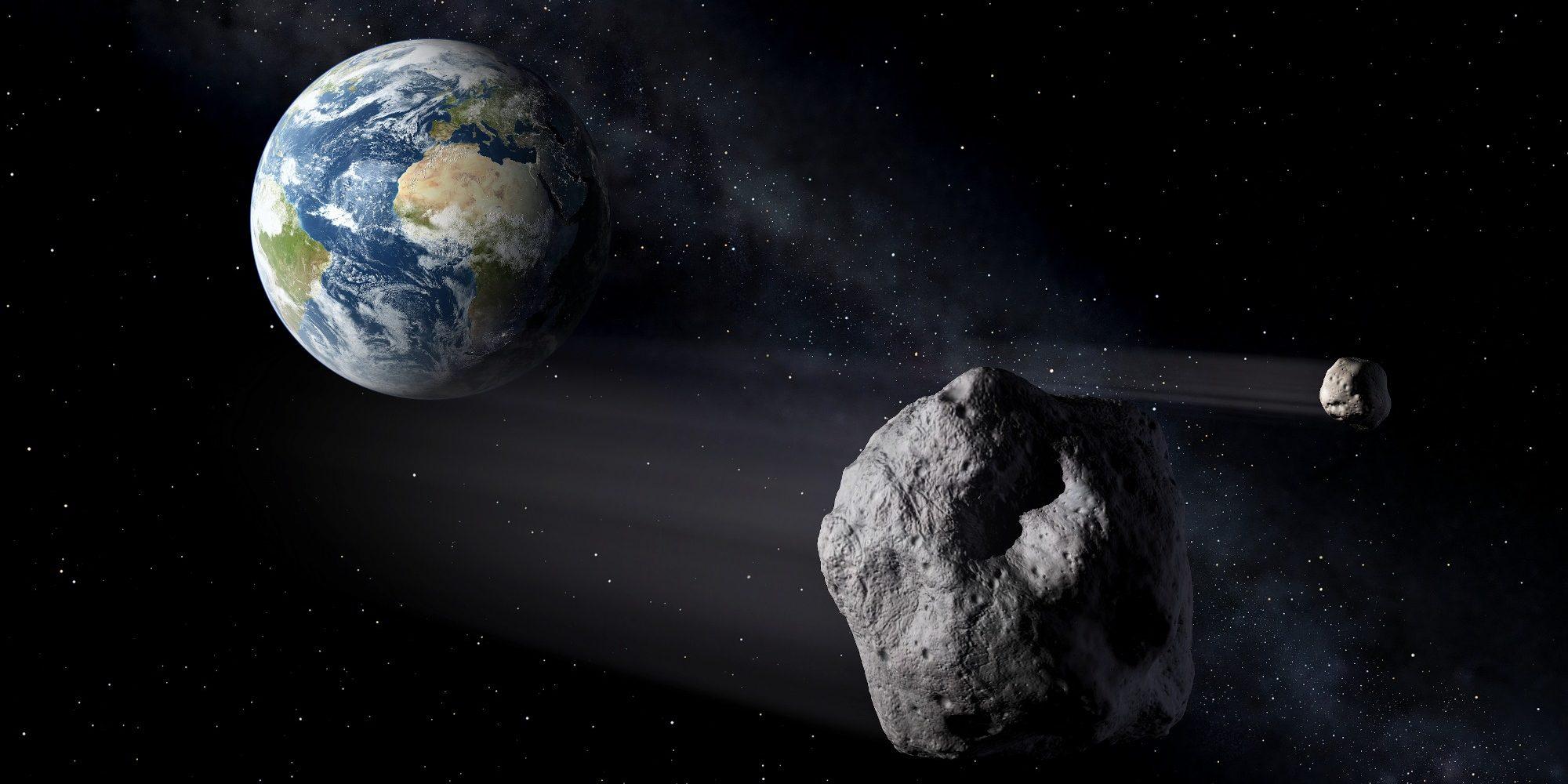
When you first hear the words “Planetary Defense” you might think of a sci-fi movie with spaceships ready to defend Earth from aliens, and maybe some Earthlings in spacesuits holding laser guns. This is not the case.
Planetary Defense is slightly more down to Earth, so to speak. It does involve defending Earth, but it does not involve aliens or any sort of attack
Planetary Defense entails detecting, monitoring, understanding, and mitigating near-Earth objects, also known as NEOs. They are small objects in our solar system like asteroids and comets that come close to Earth. Whether or not an object is classified as a NEO depends on its orbit, size, and composition. The very first discovered NEO (and second largest NEO known today) is Eros. It is an asteroid with a length of about 10.5 miles (16.8 kilometers). Eros was also the first asteroid to be studied from orbit, by the NEAR Shoemaker space probe in 1998.
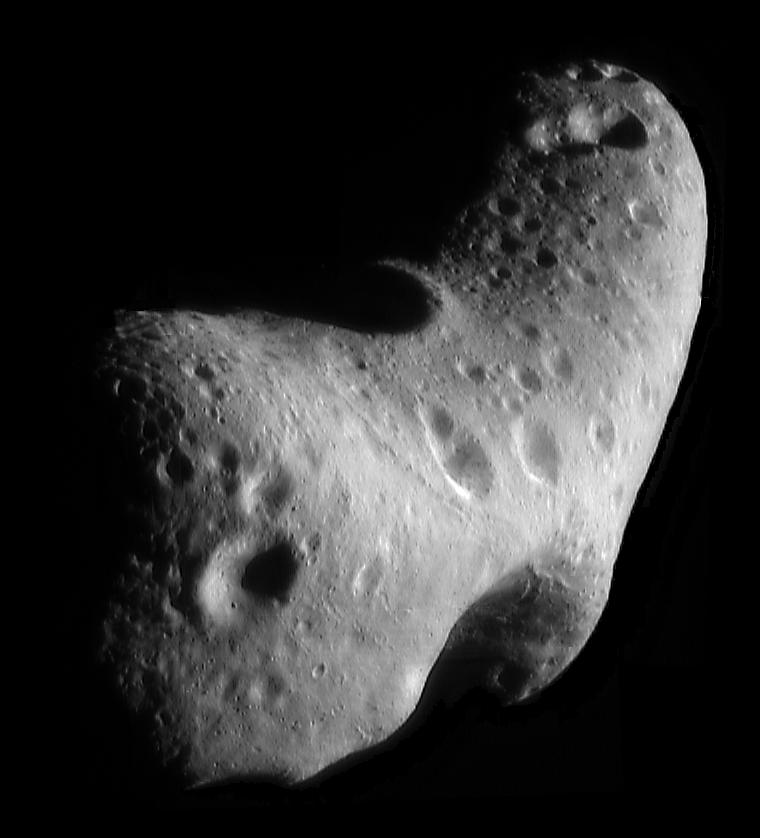
For the NEOs that may impact Earth, Planetary Defense involves preventing or mitigating their impact. Prevention involves deflecting or disrupting the NEO’s orbit, and mitigation involves taking measures to protect people, such as evacuation, in cases where a NEO cannot be prevented from impacting Earth.
NEOs do hit Earth; it is a real risk. In 1908, a large explosion occurred near the Podkamennaya Tunguska River in Russia, which flattened 830 square miles (2,150 square kilometers) of forest. The explosion is usually attributed to a meteoroid that exploded in the air, which left no impact crater. It is referred to as the Tunguska event, the largest impact event on Earth in recorded history
A more recent impact occurred in 2013, where an asteroid exploded over Chelyabinsk, Russia. The asteroid was about 66 feet long (20 meters) and the energy of its explosion was 6 to 33 times as much energy released from the atomic bomb detonated in Hiroshima during World War II. It is known as the third largest impact event in recorded history.
In the rare event that a NEO hits Earth, we need to be prepared to prevent it from happening or mitigate its impact. This doesn’t mean you should start worrying and scare all your friends – there is a network of organizations and projects currently studying NEOs and working on prevention efforts.
There are a large number of projects working on cataloging NEOs and also have warning systems set in place in case of potential NEO impacts.
You might have heard of ATLAS, the Asteroid Terrestrial-impact Last Alert System, that discovered Comet ATLAS (C/2019 Y4 ATLAS). ATLAS is comprised of a robotic astronomical survey and an early warning system for small NEOs, having two telescopes located in Hawaii. ATLAS is operated by the University of Hawaii’s Institute for Astronomy.
The Catalina Sky Survey (CSS) is another project responsible for discovering and cataloging comets and asteroids, focusing on potentially hazardous asteroids and their impact risks. CSS also is working on improving the known distribution of NEOs in our solar system. It is located at the Mount Lemmon Observatory in the Catalina Mountains, near Tucson, Arizona. CSS is conducted by the University of Arizona’s Department of Astronomy near Tucson, Arizona.
Near-Earth Object WISE (NEOWISE) is a mission extension of the Wide-field Infrared Survey Explorer (WISE), a NASA infrared space telescope. WISE was launched in 2009 and it had multiple mission extensions first occurring in 2010. NEOWISE’s focus was to search for NEOs, with an emphasis on asteroids that could collide with Earth. NASA’s Jet Propulsion Laboratory along with the California Institute of Technology manages operations for NEOWISE in Pasadena, California.
The movie below shows NEOWISE’s progress over a 4-year period starting in 2013. During this period, NEOWISE scanned the sky completely almost 8 times and observed 29,375 objects, including 788 NEOs and 136 comets. In this movie, NEOs are represented by green dots, comets are represented by yellow squares, all other asteroids are represented by gray dots. The circles are the orbits of Mercury, Venus, Earth (in teal), and Mars around the Sun (denoted as a star). You’ll notice that most of the grey dots are located in a belt, which is the main asteroid belt found between Mars and Jupiter.
The graph below shows near-Earth asteroids (NEAs) that were discovered from 1995 to the present, from major astronomical surveys.
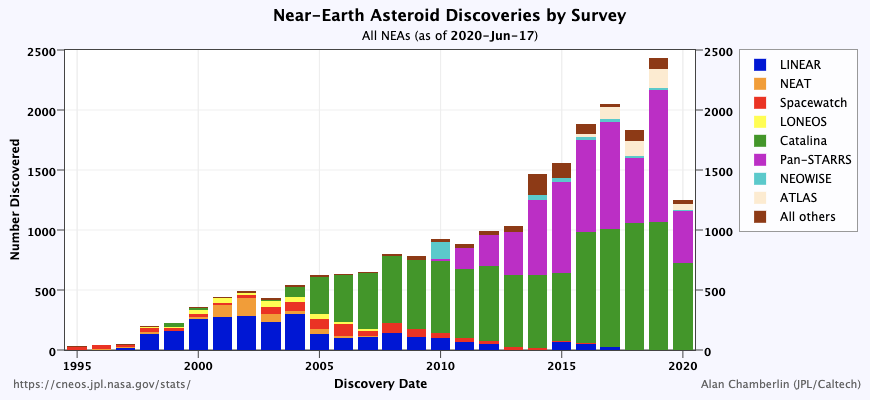
Last year, Franck Marchis, Planetary Astronomer from the SETI Institute and Unistellar’s Chief Scientific Officer, attended the 6th Planetary Defense Conference (PDC) in Washington, DC. The PDC is a conference that takes place every other year, bringing world experts from all fields to discuss developments in NEO discovery and characterization, international and political readiness, modeling and testing of NEO deflection and disruption, disaster response, impact risk assessment, public education and communication, and more. It even included a fictional, hypothetical NEO impact event scenario that allowed participants to understand the many components that need to be considered and what to take action on for a potential threat like this one.
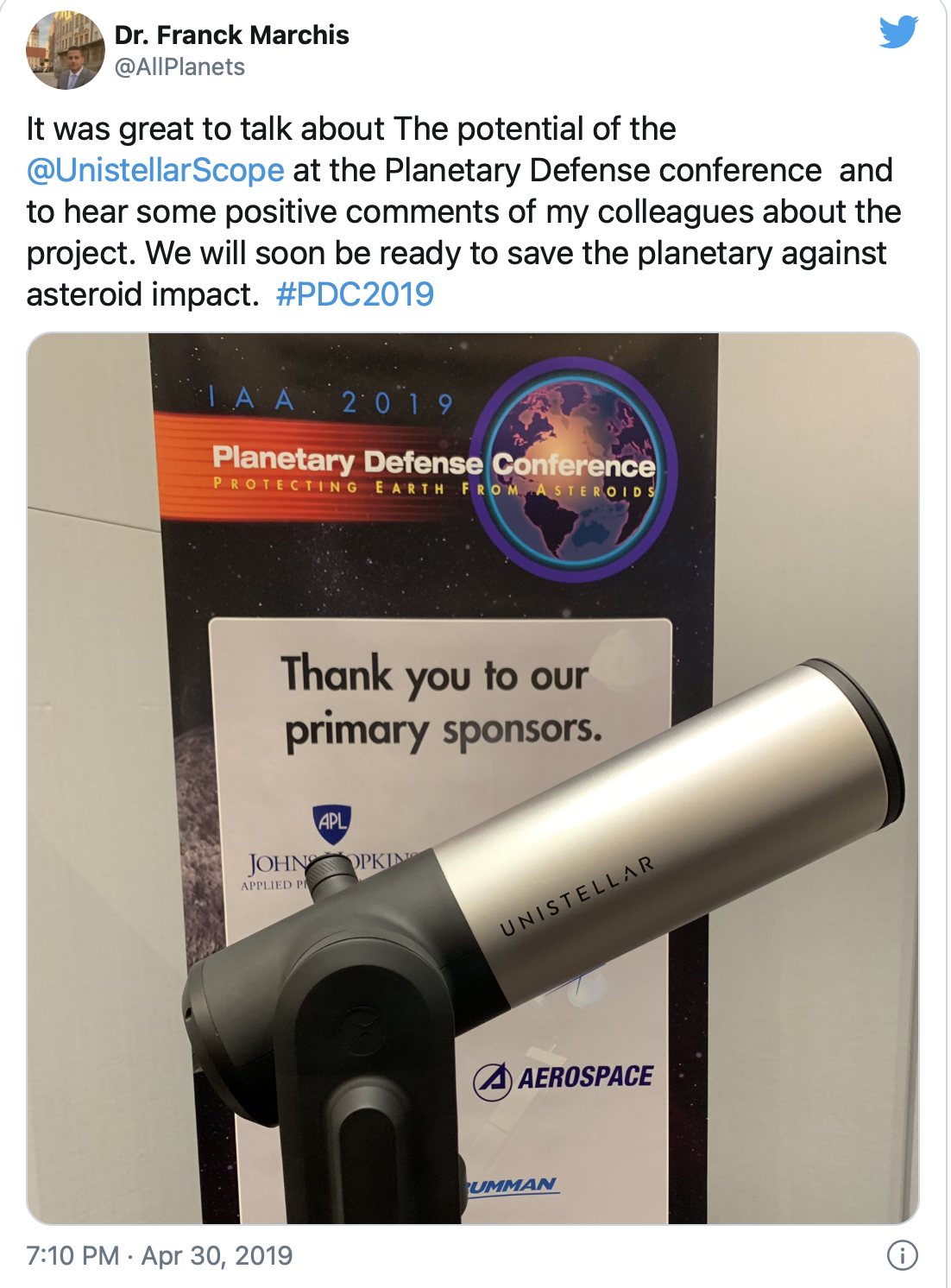
When Franck attended the PDC, he talked about the eVscope’s capability for Planetary Defense, adding that Unistellar’s network of eVscopes will be the largest network of telescopes that can watch the sky for potentially hazardous objects at any given time.
The Unistellar Network is made of thousands of identical telescopes along with their users… and it continues to grow every day! Each eVscope user can easily become a citizen scientist and contribute to the Planetary Defense program, thanks to our partnership with the SETI Institute. Right from their home, eVscope users can collect data that professional astronomers use to refine the orbit of the potentially hazardous objects! The power of combining data from multiple telescopes is appealing for professional astronomers because the more data gathered, the more accurate their orbital models are.
For example, NEAs have been already been detected by citizen astronomers with their eVscopes! Asteroid 1998OR2 made its closest approach to Earth on April 29, 2020 which gave us the opportunity to observe it from France, California, and Canada:
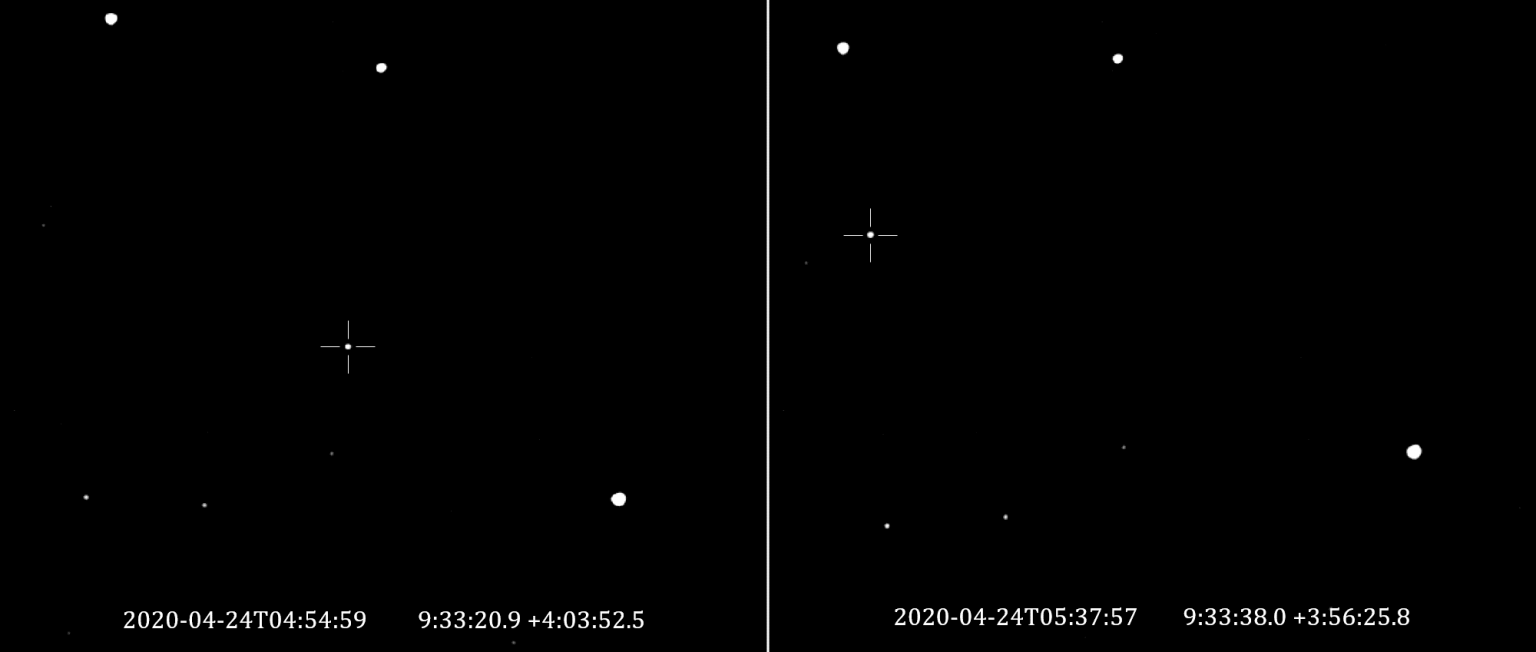
The International Astronomical Union’s (IAU) Minor Planet Center (MPC) is the official organization in charge of collecting and publishing NEO observational data. The MPC also identifies and alerts about new NEOs that have a risk of impacting Earth in the few weeks following their discovery. Unistellar is working with the MPC to use its citizen astronomer network to observe candidate NEOs, objects that could be NEOs but have not been verified yet. The MPC has already validated the accuracy of Unistellar’s data, based on a number of observations from all around the world and about different well-known asteroids. We are now looking for a NEO candidate bright enough so that is observable with the eVscope. From previous studies, we estimate that an NEO will fly close by our planet at least every month. You just have to wait to participate in the discovery of new asteroids and defend our planet!
Check out my colleague Dan Peluso’s video on Planetary Defense:
Let us know if you want to be part of our network to observe NEOs at citizenscience@unistellaroptics.com!





